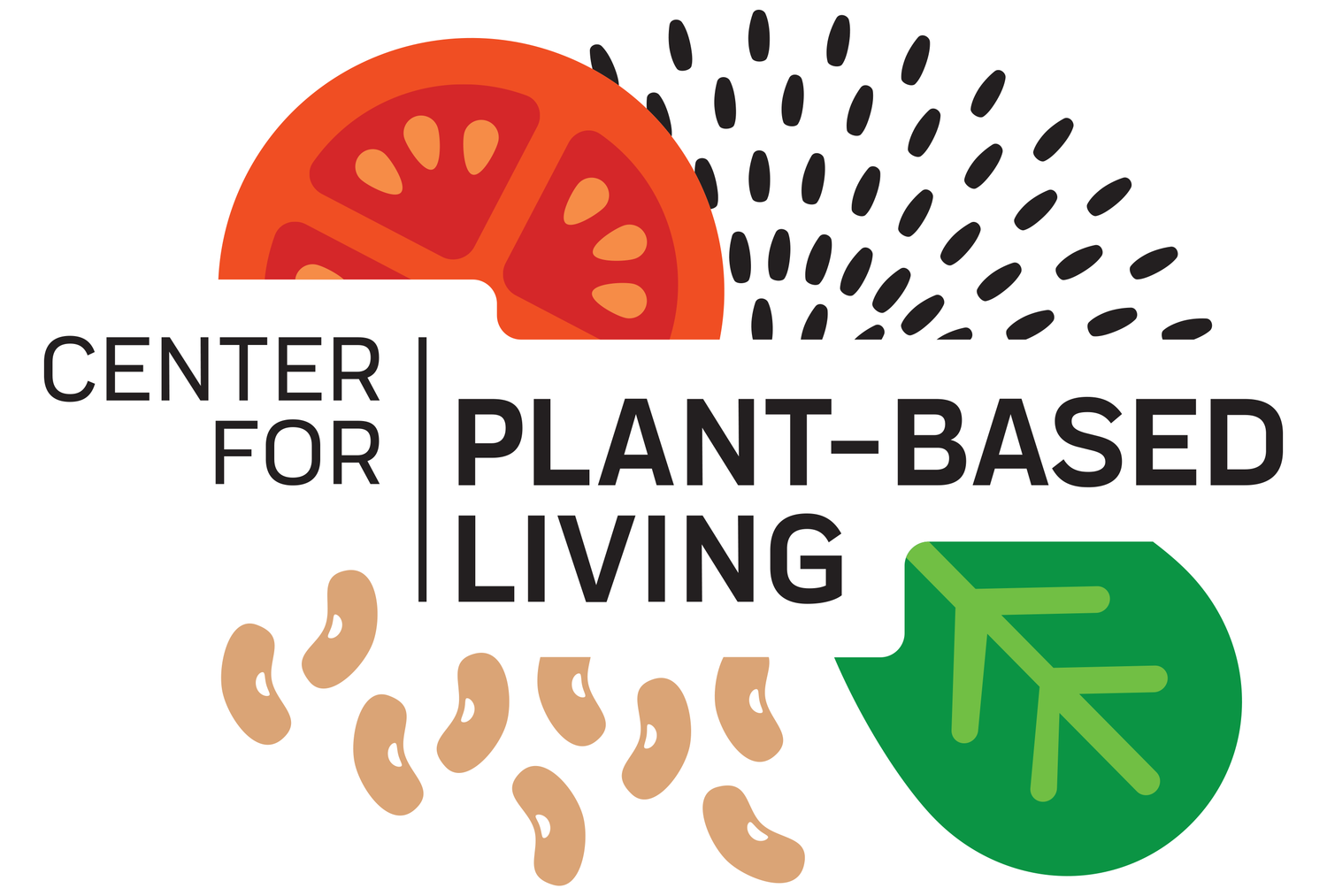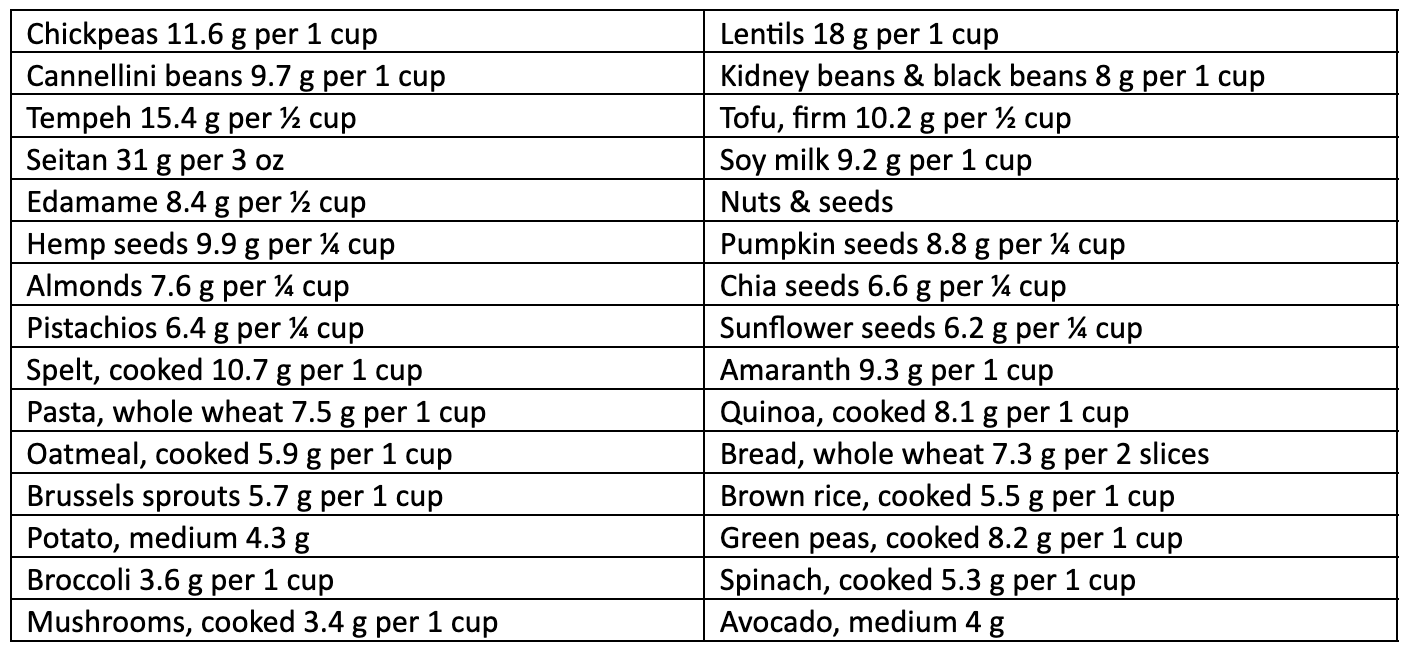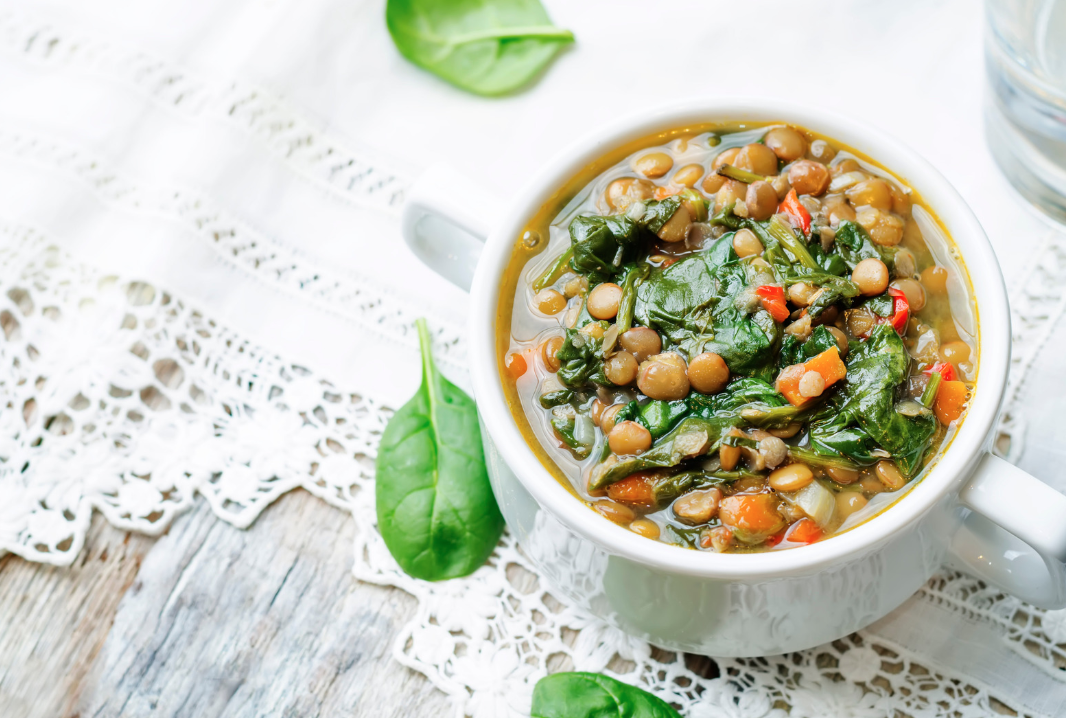WHERE DO YOU GET YOUR PROTEIN?
“Where do you get your protein?” That’s the question I get asked most often when talking about a whole-food plant-based diet. But guess what…plants have protein! If you watch a special on mountain gorillas or elephants, do you worry about where they get their protein? Probably not, but just in case, they get their protein from the plants they eat, as they are herbivores. Therefore, the protein you get when you consume animal-based foods, like steak or chicken, ultimately comes from the plants those animals ate.
Another argument you may hear sometimes is that unlike the proteins from animal sources, plant-based proteins aren’t “complete”. Proteins are made of individual amino acids, some of which our bodies can’t produce on its own; these are called “essential” amino acids and must come from our diet. “Complete” proteins, such as those found in animal derived foods, contain all these essential aminos. However, there are many who believe that plant-based proteins are “incomplete”, therefore we must consume animal derived foods to meet our protein needs. This is simply not true. There is no evidence of protein deficiency among vegetarians or vegans, except perhaps in the small percentage who eat too few calories or follow monotonous or restricted eating patterns ¹ . So, if you are eating a well-balanced plant-based diet, you will get all of the essential amino acids you need.
“The protein you get when you consume animal-based foods, like steak or chicken, ultimately comes from the plants those animals ate.”
How much protein do we actually need? The DRI (Dietary Reference Intake) is 0.36 grams of protein per pound (0.8 grams per kg) of body weight ² . For a 150 pound sedentary person that equals 54 grams per day or 65 grams per day for an 180 pound sedentary person. People who are more physically active do need more protein, in the 0.5 to 0.9 grams per pound (1.2 to 2.0 grams per kilogram of body weight) range, which equals 75-130 grams a day for an individual who weighs 150 pounds ³ . A plant-based diet typically contains about 15% plant-based protein. So, if we do the math backwards, the average person who is moderately active, might consume 1800 calories a day, of which 15% is plant-based protein. That would equal about 0.5 gm per pound, close to the recommended intake. But if you are more physically active you are most likely consuming more calories, which means you are consuming more protein! This means athletes don’t have to worry about their protein intake as much as their calorie intake.
Can you get too much protein? The answer is yes. The average adult in the US (who typically leads a sedentary lifestyle) consumes between 80-100 gm of protein a day, mostly from animal sources, almost twice the recommended intake ⁴ . A 2016 study of over 130,000 American adults found that higher animal protein intake was linked to a higher risk of mortality, whereas plant-based protein was linked to a lower risk of mortality. Additionally, participants in the study were able to lower their risk of mortality by swapping out animal proteins for plant proteins. ⁵ The reason is, that by focusing on meat to get your protein, you may be missing out on other high-quality nutrients, especially fiber and dietary antioxidants, and getting too much of less healthful nutrients, like saturated fat, which can increase your risk for many chronic diseases, like heart diseases, cancer and diabetes.
What are the best sources of plant-based proteins? The following charts shows the protein content of some protein packed, plant-based foods:
USDA Nutrient Database for Standard Reference, Legacy, 2018 and manufacturers’ information.
In summary, plants have protein, and you can easily meet your protein needs on a whole-food plant-based diet. And by getting your protein from plants, you will be getting all the other nutrients, especially fiber, that have been shown to help prevent, treat, and even reverse some chronic diseases. So, the next time someone asks you “Where to you get your protein?”, maybe you should ask them, “Where do you get your fiber”!
1 Nutrients. 2019 Nov 4;11(11):2661
2 https://ods.od.nih.gov/HealthInformation/Dietary_Reference_Intakes.aspx (accessed 07/17/2022)
3 Phillips SM, Van Loon LJ. Dietary protein for athletes: from requirements to optimum adaptation. J
Sports Sci. 2011;29 Suppl 1:S29-38.
4 https://www.ars.usda.gov/northeast-area/beltsville-md-bhnrc/beltsville-human-nutrition-research-center/food-surveys-research-group/docs/wweia-data-briefs/ (accessed 07/17/2022)
5 J Nutr. 2018 Apr 1;148(4):624-31.
🥦 Do you know about our STREAMING PLUS membership?
Our membership is built like a streaming service - you get a full library of plant-based cooking classes to watch whenever you want. PLUS, you gain access to upcoming interactive virtual cooking classes and a monthly accountability group call.
As a member you get:
Complete library of all past virtual classes - stream them whenever you’d like!
Free access to upcoming virtual classes
Library of easy and quick recipes: 100 and growing
Access to private Facebook group
Monthly accountability check-in and support group Zoom call with Caryn
Quarterly “Ask the Doc” call with Dr. Jim Loomis, our Medical Director
20% off all virtual multi-week programming
A community of support
To learn more, please visit us here.



